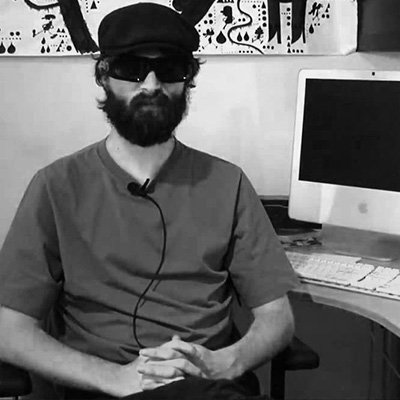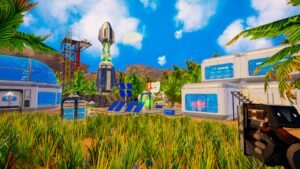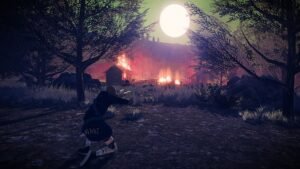Games with definite social messages are always interesting to review, because I have to navigate just how much that influences my final decisions.
Reviews ultimately require you to analyze all elements of a game that would affect a player. A game that’s stated as commentary or a representation of some kind of real-world trouble – in the case of Sym, social anxiety disorder – will undoubtedly affect how one approaches the game. There’s an unspoken pressure to evaluate games differently based on their cost, their developer, or whether they seek to raise awareness. You will often forgive a game flaws you wouldn’t a AAA product for these reasons – or, conversely, be more critical and negative because it’s attached to something that’s emotionally valuable to others.
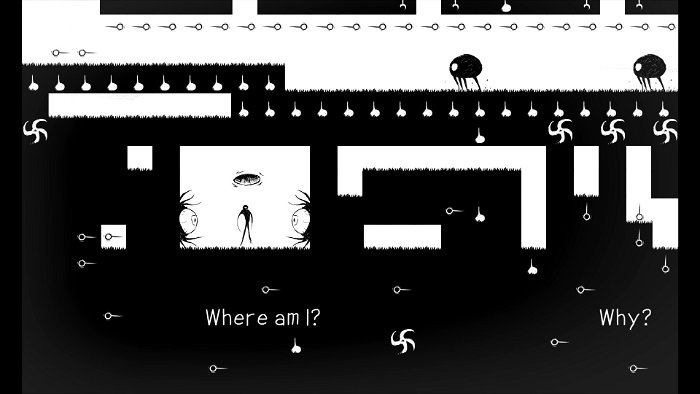
With all that in mind, I enjoyed Sym and feel it’s a solid addition to the puzzle-platformer, a genre that has several quality offerings available for free online.
Sym‘s story is told in minimalist, surreal fashion, about a spindly figure desperate to escape the attentions of others. These attentions take the form of cartoonish drawing-like monsters – biting plants, whirring blades, and shambling animals. I found it easy enough to follow, which each level giving strong hints to its theme and what it symbolizes. Your primary defense against such creatures is your ability to move between the “dark” and “light” squares, sinking into the solid floor to become a bulbous white figure that treats the original bright areas as solid, and up as down.
It looks great. Black and white, doodle-like art and symbols marking various level mechanics are mixed in with small blurbs of text. Animations are smooth and lack slowdown. It can get quite busy at times, and requires a lot of attention to pick out the various stage hazards. That’s not even a negative criticism. It’s actually beneficial to making the game more difficult, forcing you to pay attention to the levels.


The actual designs, in true indie platformer fashion, range from invigorating to infuriating, for mostly the right reasons. This is a game that tries to be clever in its signature mechanics (the shifting between planes), but doesn’t keep adding new ones. A problem I had with Braid was that it kept layering on mechanics that changed how the game was played – Sym adds new enemies and obstacles each section, but doesn’t fundamentally change how the player has to operate. What it does do is create some rather intriguing new designs using existing mechanics. Giant eyes, originally merely ambiance, change squares from dark to light, creating either tunnels or platforms depending on your current plane. Some levels require trial and error to plan a route through a rapidly-closing pathway, while others require multiple switching at key times in order to produce and navigate a path. One tower closed in on me as I launched upward, leaping from platform to platform and hoping I picked the right path, before being crushed between advancing walls. There’s even one that offers a series of binary math equations, which I didn’t understand but discovered via trial and error (and examining my surroundings). I never felt that a puzzle was entirely unfair, even though I may have yelled at my screen words to that effect.
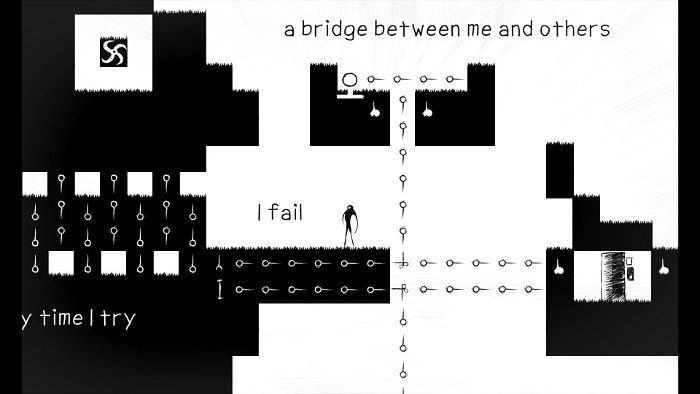
As I went along, memorizing which spaces held flowers and which arrows led to the point I needed a platform to travel, I found myself looking for problems with more and more scrutiny, trying to find out just what was wrong with this game. I did find that some of the controls tended to be unforgiving, with characters easily overshooting platforms. You drop straight down upon hitting a ceiling, with little forgiveness. Enemy hitboxes are equally harsh, with the slightly movement into their space resulting in the crunching noises of being devoured by your fears.
The one that really bothered me was how your character would get stuck in single gaps, hanging on the edge rather than walking straight off. It would create hang-time occasionally, and require a jump or two to thread the needle and leap in. It wasn’t game-breaking, but it was disruptive to an already-difficult game. With this kind of game, it’s easy enough to say that the difficulty is intended, but some of these reactions tended to stray close to interrupting experience rather than enhancing it.
The game’s good fun, and has some solid potential. The editor seems easy to use, and potentially allows for all sorts of unfair, thought-provoking, keyboard-shattering levels. I enjoyed this game quite a lot.


